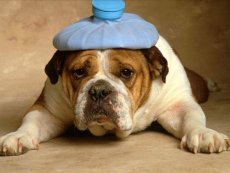New publications
Immune-mediated arthritis
Last reviewed: 08.07.2025

All iLive content is medically reviewed or fact checked to ensure as much factual accuracy as possible.
We have strict sourcing guidelines and only link to reputable media sites, academic research institutions and, whenever possible, medically peer reviewed studies. Note that the numbers in parentheses ([1], [2], etc.) are clickable links to these studies.
If you feel that any of our content is inaccurate, out-of-date, or otherwise questionable, please select it and press Ctrl + Enter.

This is an unusual group of diseases in which antibodies directed against the dog's own connective tissue lead to the development of either erosive or nonerosive arthritis. Nonerosive arthritis involves inflammation but no tissue destruction.
Rheumatoid arthritis is an erosive arthritis that typically occurs around age 4 in small toy dogs and other small breeds such as Shelties. It is characterized by morning stiffness, intermittent lameness, and swelling of small joints, primarily the ankles and hocks. Associated symptoms may include fever, loss of appetite, and lymphadenopathy.
Nonerosive arthritis most commonly occurs in medium to large sized dogs around 5 to 6 years of age. The cause is unknown. Signs of nonerosive arthritis include intermittent fever, loss of appetite, joint swelling, and lameness that often changes from one limb to the other. One form of nonerosive arthritis occurs with systemic lupus erythematosus.
The diagnosis of immune-mediated arthritis is made based on joint X-rays and specific laboratory tests. Synovial fluid analysis helps differentiate immune-mediated arthritis from infectious arthritis and osteoarthritis.
Treatment: Immune-mediated arthritis responds to anti-inflammatory and immunosuppressive medications, including corticosteroids and chemotherapy drugs. Treatment may last eight weeks or longer. Your veterinarian may use several medications or combinations of them to determine which protocol works best for your dog. Rheumatoid arthritis responds less well to medication than nonerosive arthritis.
Light to moderate exercise is helpful, but strenuous exercise, which may be done during periods of remission, can damage joints and should be avoided. Dogs that are overweight should be placed on a calorie-restricted diet. In fact, it is better if the dog is slightly thin. Discuss this with your veterinarian.

 [
[